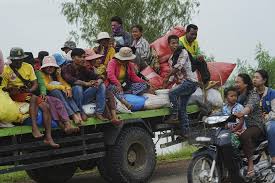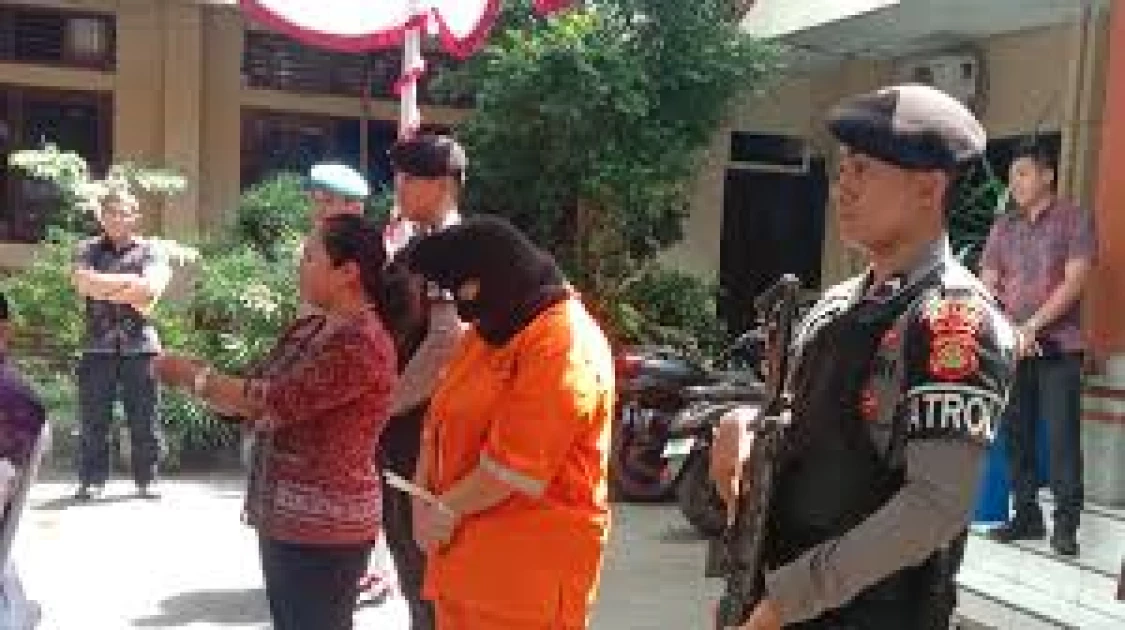For the third straight day, deadly clashes between Thai and Cambodian forces have rocked the remote borderlands shared by the two Southeast Asian nations. As the fighting intensifies, at least 38,000 Cambodians and nearly 140,000 Thais have fled their homes, caught between artillery fire, explosions, and uncertainty.
In one hospital near the frontlines, a Cambodian soldier lay in pain on a hallway floor, waiting for surgery. “There’s shrapnel in my back,” he said. “They couldn’t remove it because the military hospital didn’t even have an X-ray machine.” His clothes had been blown off by the blast.
Another soldier recounted being hit near Ta Krabei, one of the contested temples near the Thai-Cambodia border. Both he and others had been fighting near ancient sites like Ta Moan Thom, which have long been flashpoints in the two countries’ century-old border dispute.
Fighting erupted Thursday near several sacred but contested sites. Cambodia claims its forces have now pushed back Thai troops and regained control of eight border zones, including areas surrounding the ancient temples. These claims have not yet been independently verified.
The border between Cambodia and Thailand stretches over 800 kilometers (about 500 miles). While officially drawn in colonial times, its exact path has never been fully settled. Disputes over maps and ownership of historic religious sites have fueled past flare-ups — most notably near Preah Vihear temple in 2011.
So far, over 30 people have died, most of them civilians. Cambodian officials confirmed at least 13 deaths within their borders, while Thai reports suggest 20 more have died on their side. Infrastructure on both sides — homes, farms, even hospitals — has come under attack.
In Oddar Meanchey, where some of the heaviest bombing has occurred, many families barely had time to flee.
“We ran for our lives,” said one woman sheltering at a school-turned-refugee center. “We couldn’t take anything. Now, we have almost no food.”
Chheng Deab, a mother of two, told Al Jazeera she left her village just five kilometers from the border, carrying her children and a small bag of clothes. “If the shooting doesn’t stop, we’ll keep moving,” she said. “I just want to go home.”
Local authorities in Cambodia report that families are running out of food and supplies. Villagers are sharing what little rice they have left. With government aid slow to arrive, some residents have risked their lives to return to their homes to check on livestock or collect belongings.
“We have no idea how long this will last,” one community leader said. “People are scared, tired, and hungry.”
Meanwhile, on the Thai side, martial law has been declared in eight border districts. Evacuations continue as artillery fire spreads. Thai officials say 140,000 civilians have now been displaced.
Both nations blame each other for starting the conflict.
Cambodia accuses Thailand of firing first and using cluster bombs—a weapon banned under international law. Thailand, meanwhile, accuses Cambodia of firing long-range rockets into civilian areas, including a hospital, and planting landmines that injured several Thai soldiers.
The situation escalated earlier this year when a Cambodian soldier was killed in a brief border skirmish. Tensions simmered over the months through diplomatic retaliations and trade sanctions. Things boiled over this week when Thai troops reportedly crossed into disputed areas, and both sides began trading fire.
“These are premeditated and unprovoked attacks,” said Cambodian Prime Minister Hun Manet, placing full blame on Thailand’s military.
Thai acting Prime Minister Phumtham Wechayachai responded by calling Cambodia’s strikes on civilians potential war crimes.
With neither side backing down, nor national pride fueling the flames, analysts warn this could become a protracted conflict.
Beyond the temples and maps, the real casualties of this conflict are the civilians — many of them poor farmers — now trapped in the crossfire.
“I miss my home,” said Deab quietly, cradling her son in a classroom with no electricity. “I don’t know if we’ll ever go back.”
As international observers call for restraint and mediation, the people on both sides of the border are simply hoping the bombs stop falling — and that their homes, history, and hope are not lost in the process.



